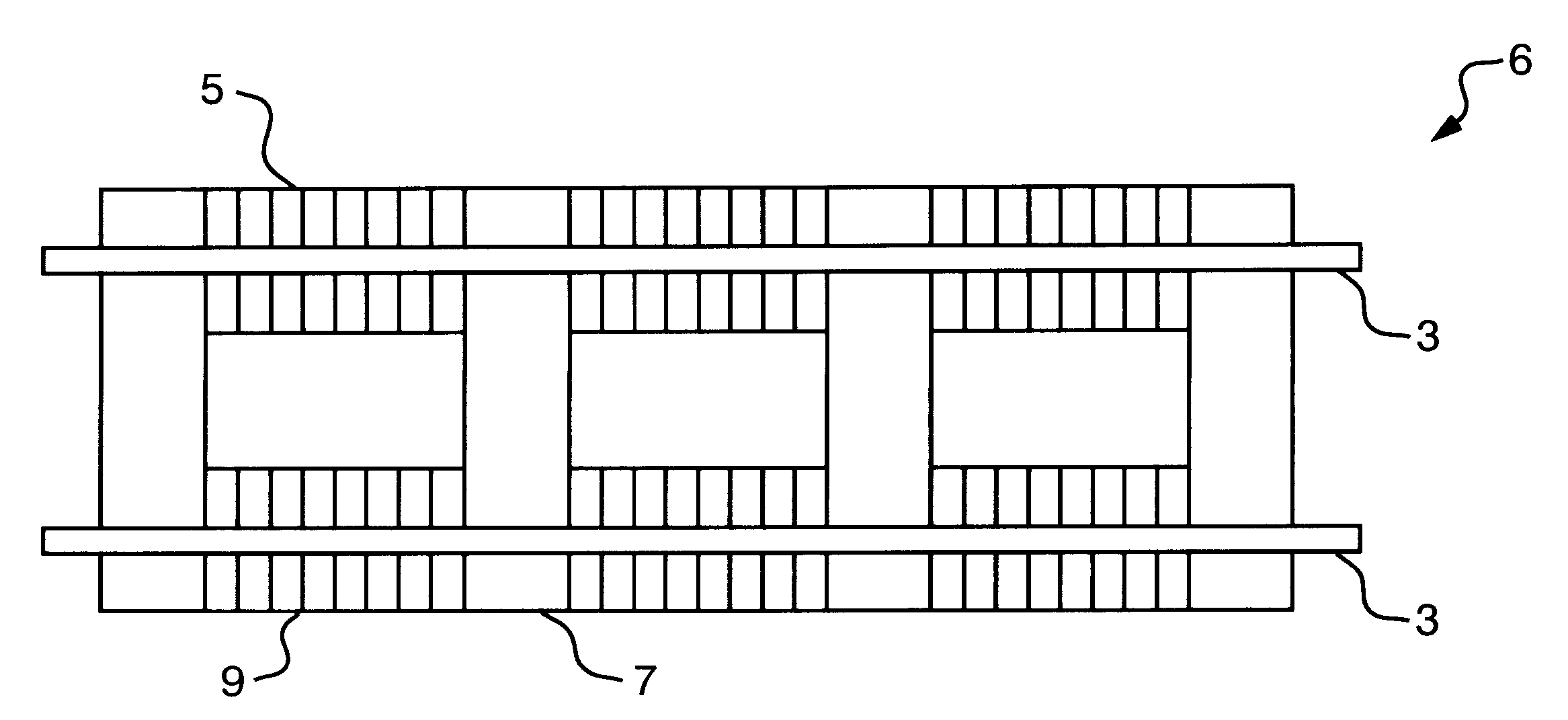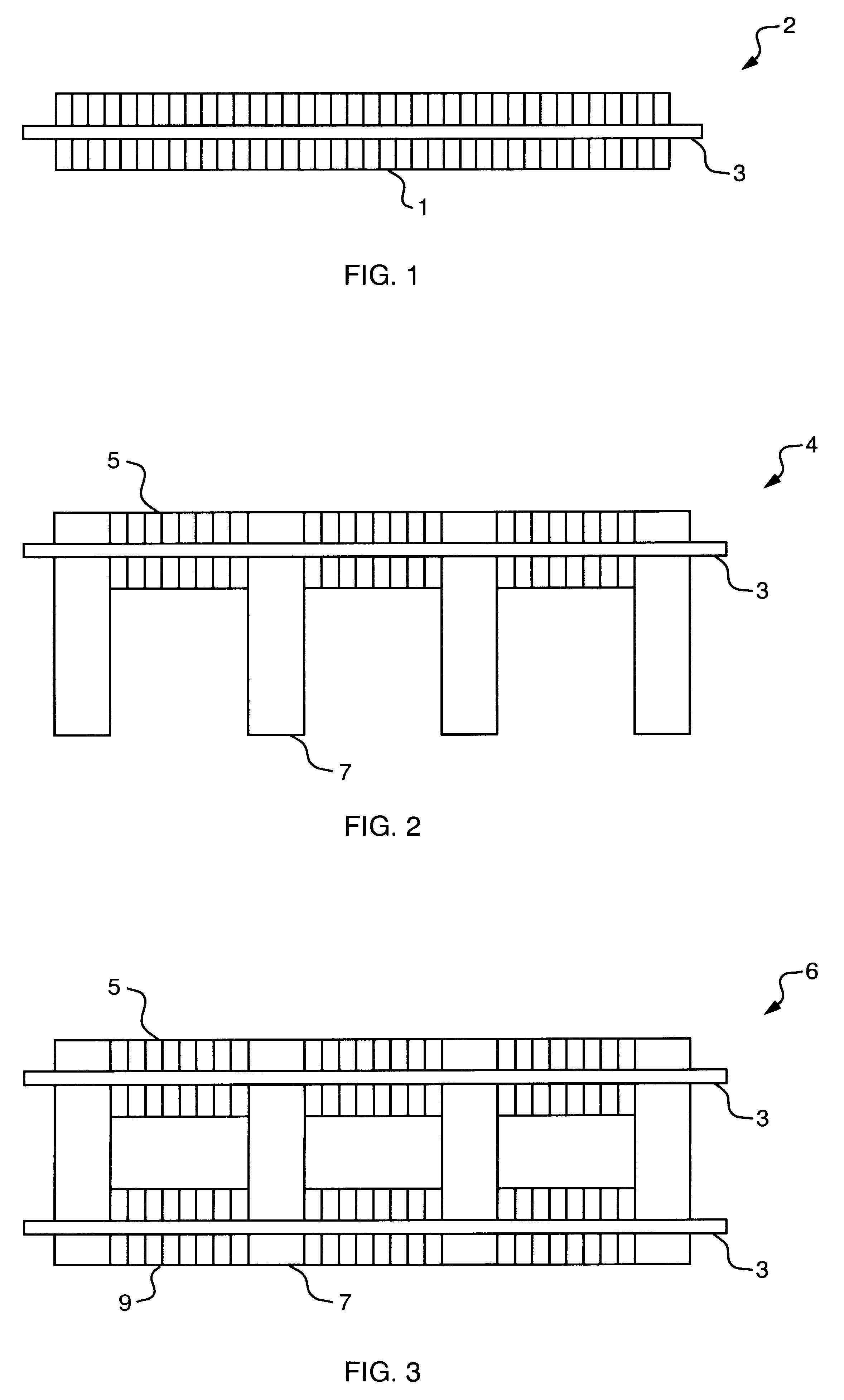Prestressing system for wood structures and elements
a wood structure and pre-stressing technology, applied in the direction of girders, joists, trusses, etc., can solve the problems of difficult to maintain prestress forces over the life of the wood structure, slow commercial application of prestressed structural wood, and prone to lose prestress rather quickly
- Summary
- Abstract
- Description
- Claims
- Application Information
AI Technical Summary
Problems solved by technology
Method used
Image
Examples
Embodiment Construction
of the invention in stresslam decks and bridges
Item Preferred properties RSPWSS GFRP tendon (E or S-Glass) Stressed Steel Company, S. Dakota GFRP tendon reinforcement 50-65% glass by volume GFRP tendon -- end-anchor GFRP transitioned to threaded bar or use protected anchor with prestress chucks GFRP tendon Stiffness 6-7 10.sup.6 psi GFRP tendon strength 100 + ksi Sustained prestress in GFRP tendon 50 psi prestress p Number of initial stressing passes As low as two passes may be sufficient Number of re-stressing in service possibly none required after initial stressing Prestress anchor plate single GFRP plate
The present invention may also be applied to longitudinally stressed solid wood decks over steel, concrete or wood girders. As shown in FIGS. 5a & 5b, the decks 12 are made with sawn lumber units 15 placed on edge perpendicular to traffic. The tendons 3, placed parallel to traffic through aligned holes 17 in the wood panels 15, need only be stressed once during construction. Prio...
PUM
| Property | Measurement | Unit |
|---|---|---|
| Force | aaaaa | aaaaa |
| Flow rate | aaaaa | aaaaa |
| Area | aaaaa | aaaaa |
Abstract
Description
Claims
Application Information
 Login to View More
Login to View More - R&D
- Intellectual Property
- Life Sciences
- Materials
- Tech Scout
- Unparalleled Data Quality
- Higher Quality Content
- 60% Fewer Hallucinations
Browse by: Latest US Patents, China's latest patents, Technical Efficacy Thesaurus, Application Domain, Technology Topic, Popular Technical Reports.
© 2025 PatSnap. All rights reserved.Legal|Privacy policy|Modern Slavery Act Transparency Statement|Sitemap|About US| Contact US: help@patsnap.com



